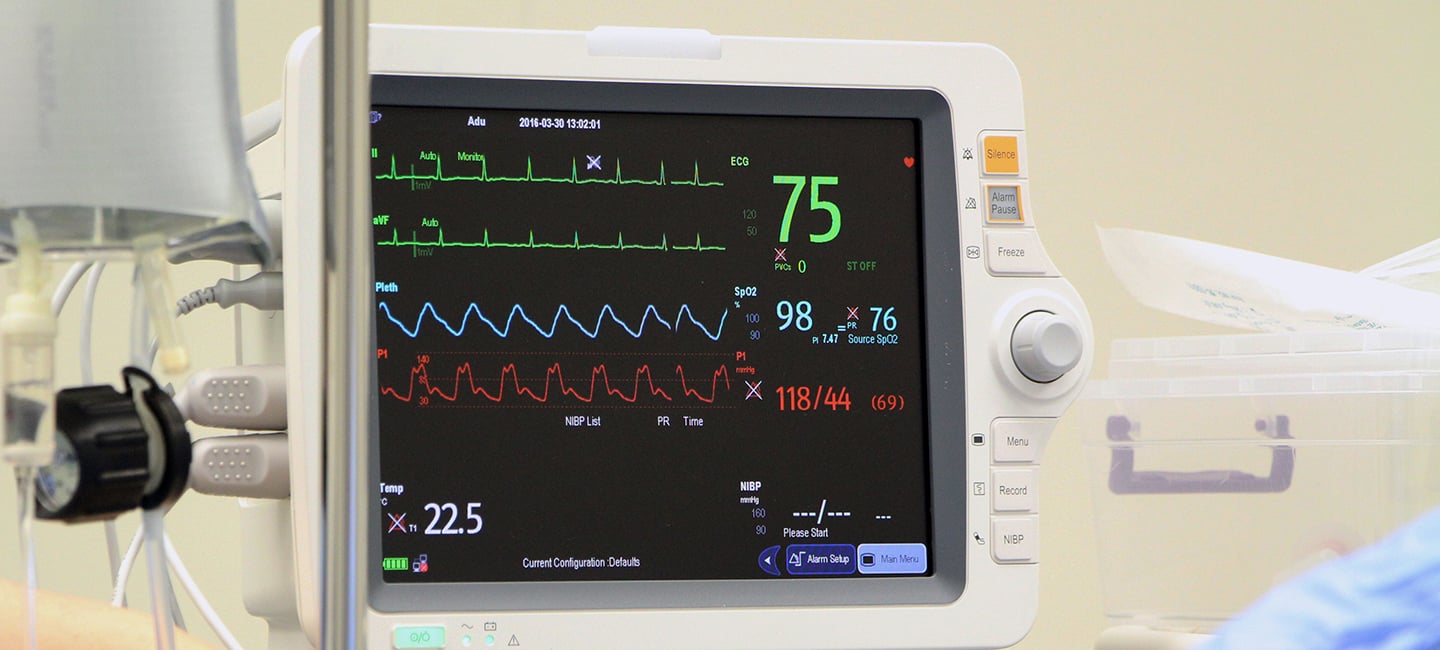Pacemakers Beneficial for Cancer Patients with Cardiomyopathy
Life-saving cancer treatments can sometimes weaken the heart, a condition called cardiomyopathy. This serious side effect is one reason cardio-oncologists are essential to keeping patients and survivors’ cardiovascular health in check.
These specialized heart experts often use a commercially-available therapy called CRT, for cardiac resynchronization therapy, which can be delivered through a surgically implanted defibrillator or pacemaker. And a new study shows it can significantly improve outcomes for cancer patients with weakened hearts.
“Different cancer treatments can have serious effects on the cardiovascular system, leading to various toxicities including heart failure, abnormal heart rhythms, heart attacks and strokes,” explained Moffitt Cancer Center cardio-oncologist Michael Fradley, M.D.

Dr. Michael Fradley, Cardio-oncologist
Anthracyclines and other drugs used to treat breast cancer and lymphomas are particularly likely to have a negative effect on the heart muscle and result in reduced heart function in approximately 9%of patients treated with them. Sometimes, along with the negative effect on the heart muscle, the chemotherapy may also impact the electrical system in the heart, resulting in an abnormal contraction pattern. When contractions in the heart's right and left sides aren't synchronized, the heart begins to progressively fail because it becomes less and less efficient.
“This very specific device called CRT-D is implanted in individuals with weak hearts who also have abnormal electrical conduction,” said Fradley. “The device works to restore the normal electrical activation of the heart while also monitoring for and treating dangerous life threatening heart rhythms.”
Fradley was a co-author on a recent study out of Massachusetts General Hospital that was published in the Journal of the American Medical Association (JAMA). It found that using CRT in this way can significantly improve patient outcomes. He said that the patients in the study all had the CRT implanted after cancer treatment and saw marked improvement in cardiovascular health.
The study was small but complex, coordinating with 12 cardio-oncology programs across the United States to enroll 30 patients between 2014 and 2018. Four of the patients had CRT pacemakers and 26 had CRT defibrillators implanted. Six months after surgery, the devices were found to increase left ventricular ejection fraction – a measure of blood flow from the heart – by a mean of 11 percentage points, a difference that is statistically significant and clinically meaningful.
“These devices have been implanted in any patient with a weak heart and abnormal electrical conduction, regardless of the cause,” Fradley said. “But this is the first study to systematically evaluate their benefit specifically in this population.”
Cancer patients undergoing cardiovascular health issues are often passed from specialist to specialist, be it an oncologist, cardiologist or an internist. That means many are not frequently receiving routine evaluation and monitoring for long-term cardiovascular dysfunction.
“This highlights the need for improved survivorship programs with the incorporation of cardio-oncology evaluation for those patients at highest risk for developing problems,” Fradley said. “This approach will hopefully reduce the likelihood that these patients will develop heart failure and need CRT devices. Once the problems have developed, then cardiologists, and cardio-oncologists specifically, are essential in their long term care and management.
“As more patients are living longer and surviving different cancers, it becomes increasingly important to monitor and treat these cardiovascular issues,” Fradley said.



